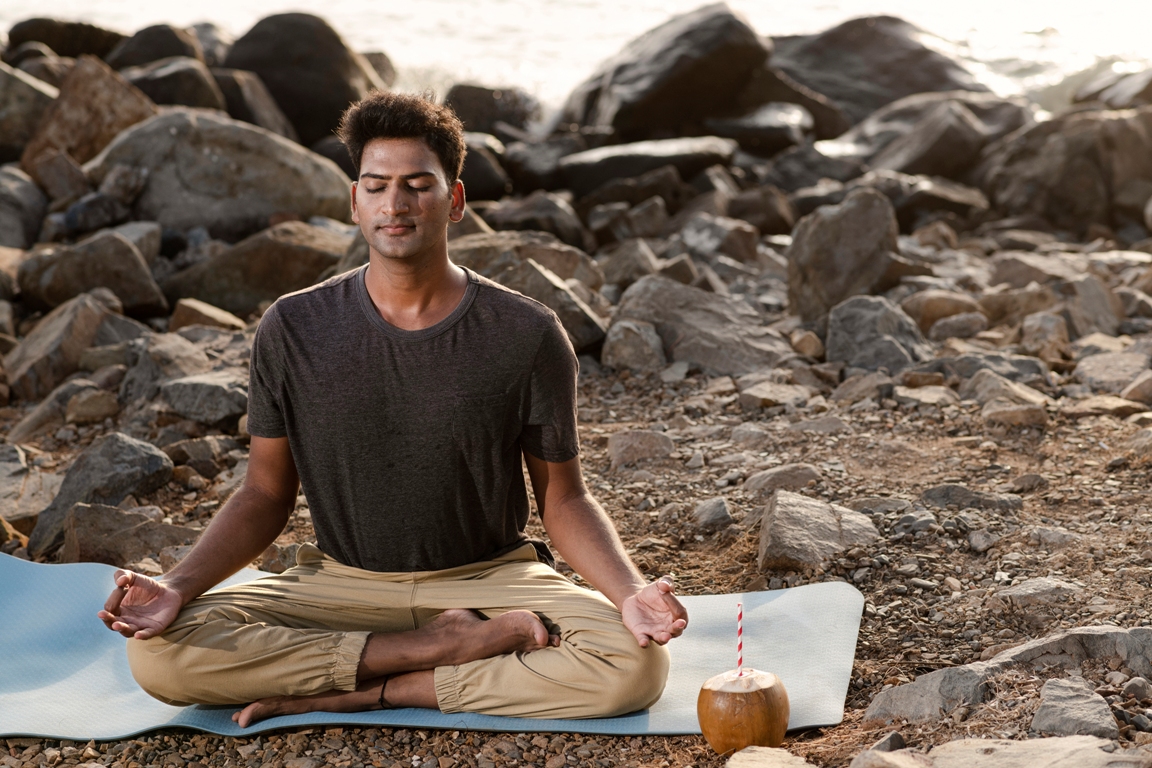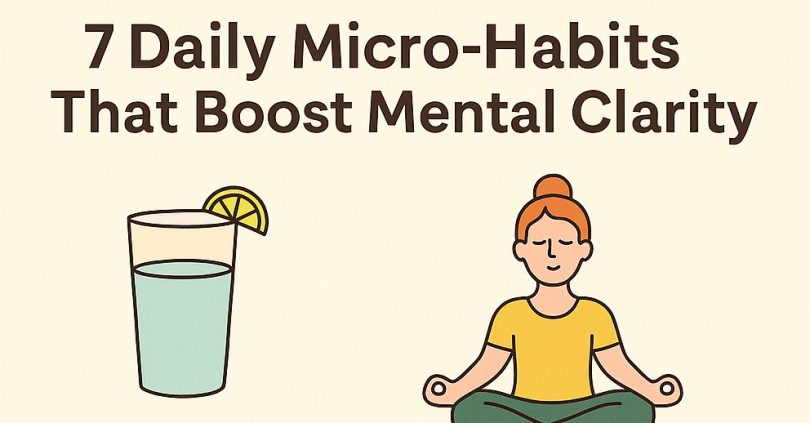Vedic Meditation is an ancient practice that has gained popularity for its profound effects on mental, physical, and spiritual well-being. Rooted in the ancient Indian tradition of the Vedas, this form of meditation is designed to be simple, natural, and effective. Whether you’re new to meditation or looking to deepen your practice, understanding what Vedic Meditation is can open new pathways to personal growth and inner peace.
Table of Contents
- Introduction to Vedic Meditation
- What is Vedic Meditation?
- History and Origins of Vedic Meditation
- How Does Vedic Meditation Work?
- Benefits of Vedic Meditation
- Who Can Practice Vedic Meditation?
Key Takeaways
- Vedic Meditation is rooted in the ancient Indian tradition of the Vedas.
- This practice is designed to be simple and natural, making it accessible to everyone.
- The benefits of Vedic Meditation include reduced stress, better sleep, and enhanced inner peace.
Introduction to Vedic Meditation
*Vedic Meditation* offers more than just relaxation; it transforms practitioners through techniques handed down across generations. Unlike other meditation forms that demand intense concentration, *Vedic Meditation* remains effortless, making it accessible to anyone, regardless of experience.
What Makes Vedic Meditation Unique?
One of the most distinctive aspects of *Vedic Meditation* is its use of a personal mantra, a sound or phrase that is silently repeated during the meditation session. This mantra helps to settle the mind into a deep state of rest, allowing the body to release stress and tension naturally.
What is Vedic Meditation?
*Vedic Meditation* is a form of meditation that originates from the ancient Indian texts known as the Vedas. These texts are considered some of the oldest and most authoritative scriptures in Hinduism. *Vedic Meditation* is designed to be practiced for 20 minutes, twice a day, while sitting comfortably with the eyes closed.
How Vedic Meditation Differs from Other Meditation Techniques
Unlike mindfulness meditation, which often involves focusing on the present moment or the breath, *Vedic Meditation* uses a specific mantra that is chosen by a trained instructor. This mantra is unique to each practitioner and is selected based on various factors, including age and life stage.
The Science Behind Vedic Meditation
Research has shown that *Vedic Meditation* can lead to significant improvements in mental and physical health. Studies have found that regular practice of *Vedic Meditation* can reduce stress, lower blood pressure, and improve overall well-being.
History and Origins of Vedic Meditation
The origins of *Vedic Meditation* can be traced back over 5,000 years to the ancient Indian texts known as the Vedas. These texts are a collection of hymns, prayers, and rituals that form the foundation of Hindu philosophy and spirituality.
The Role of the Vedas in Vedic Meditation
Scholars consider the Vedas the oldest sacred texts in the world, containing detailed instructions on various forms of meditation, including *Vedic Meditation*. Practitioners passed down these teachings orally for centuries before eventually writing them down, ensuring the tradition’s preservation for future generations.
Evolution of Vedic Meditation Over the Centuries
While the core principles of *Vedic Meditation* have remained consistent over the millennia, the practice has evolved to meet the needs of modern practitioners. Today, *Vedic Meditation* is taught around the world and is recognized for its simplicity and effectiveness.

How Does Vedic Meditation Work?
At its core, *Vedic Meditation* is a simple practice that involves sitting comfortably with your eyes closed and silently repeating a personal mantra. This process allows the mind to settle into a state of restful alertness, where deep rest and relaxation can occur.
The Process of Vedic Meditation: Step-by-Step
Here’s a basic overview of how to practice *Vedic Meditation*:
- Sit comfortably in a quiet place.
- Close your eyes and begin silently repeating your mantra.
- Allow the mantra to come and go naturally, without forcing it.
- If your mind wanders, gently bring it back to the mantra.
- Continue this process for 20 minutes, then slowly open your eyes.

The Role of Mantras in Vedic Meditation
The mantra is a key element of *Vedic Meditation*. It is not just a word or phrase but a sound that carries a specific vibrational quality. This sound helps to calm the mind and allows the practitioner to experience deeper levels of consciousness.
Scientific Studies on Vedic Meditation
Several studies have been conducted to explore the benefits of *Vedic Meditation*. These studies have shown that practicing *Vedic Meditation* can lead to significant reductions in stress, anxiety, and depression. Additionally, it has been found to improve cognitive function and overall mental health.
| Benefit | Description |
|---|---|
| Reduced Stress | Regular practice of Vedic Meditation has been shown to lower cortisol levels, which are associated with stress. |
| Improved Sleep | Many practitioners report better sleep quality after incorporating Vedic Meditation into their daily routine. |
| Enhanced Cognitive Function | Studies suggest that Vedic Meditation can improve focus, memory, and overall cognitive function. |
Benefits of Vedic Meditation
*Vedic Meditation* offers a wide range of benefits that impact various aspects of your life. From reducing stress to improving physical health, the practice of *Vedic Meditation* can lead to significant positive changes.
Mental Health Benefits
One of the most well-known benefits of *Vedic Meditation* is its ability to reduce stress and anxiety. Meditation helps the body release accumulated stress, leading to a calmer and more balanced state of mind by achieving deep rest.

Physical Health Benefits
In addition to its mental health benefits, *Vedic Meditation* has been shown to improve physical health as well. Regular practice can lead to better sleep, reduced blood pressure, and enhanced overall well-being.
Spiritual Benefits
For those seeking a deeper connection with their inner selves, *Vedic Meditation* offers profound spiritual benefits. The practice allows you to tap into your inner wisdom, leading to greater self-awareness and inner peace.
Who Can Practice Vedic Meditation?
One of the best things about *Vedic Meditation* is that it is accessible to everyone. Whether you are a beginner or an experienced meditator, *Vedic Meditation* can be easily incorporated into your daily life.
Vedic Meditation for Beginners
If you’re new to meditation, *Vedic Meditation* is an excellent place to start. The practice is simple and does not require any special skills or prior experience. With regular practice, you’ll quickly begin to experience the benefits of this powerful technique.
Is Vedic Meditation Suitable for Everyone?
Anyone can practice *Vedic Meditation*, regardless of their age, background, or lifestyle. However, learning the technique from a certified instructor is advisable, as they can guide you through the process and offer personalized support.
How to Start Practicing Vedic Meditation
Getting started with *Vedic Meditation* is straightforward and requires minimal preparation. The most important step is finding a certified instructor who can teach you the correct technique and provide ongoing support as you develop your practice.
Finding a Certified Vedic Meditation Instructor
To learn *Vedic Meditation*, it’s essential to work with a certified instructor. Trained instructors use traditional methods to ensure you receive the proper guidance and instruction. You can find certified instructors through meditation centers, online platforms, or referrals from other practitioners.
Essential Tools and Resources for Beginners
While *Vedic Meditation* does not require any special equipment, having a quiet space and a comfortable seat can enhance your experience. Additionally, many beginners find it helpful to use resources like guided meditation recordings, apps, or books to support their practice.
Common Mistakes to Avoid When Starting Vedic Meditation
As with any new practice, beginners may encounter some challenges. Here are a few common mistakes to avoid:
- Forcing the mantra: The mantra should flow naturally, without force.
- Expecting immediate results: Patience is key. The benefits of Vedic Meditation unfold over time.
- Overthinking the process: Vedic Meditation is simple by design. Trust the process and let go of any expectations.

Vedic Meditation vs. Transcendental Meditation
*Vedic Meditation* and Transcendental Meditation (TM) are often compared due to their similar origins and use of mantras. However, there are some key differences between the two practices.
Similarities Between Vedic and Transcendental Meditation
Both *Vedic Meditation* and TM are mantra-based practices that originated from the Vedic tradition. They both emphasize ease and naturalness in their practice, allowing the mind to settle effortlessly into a state of restful awareness.
Key Differences: Which One is Right for You?
The primary difference between *Vedic Meditation* and TM lies in their teaching methods and the mantras used. TM instructors typically prescribe mantras using a standardized system, whereas *Vedic Meditation* instructors personalize mantras for each practitioner. Additionally, TM courses usually follow a more structured format, while *Vedic Meditation* offers greater flexibility.
Testimonials: Experiences of Practitioners
Many practitioners of both *Vedic Meditation* and TM report profound experiences and benefits. Here are a few testimonials:
“*Vedic Meditation* has transformed my life. I feel more centered, calm, and connected to my inner self.” – Jane D.
“After practicing TM for a year, I’ve noticed a significant reduction in my anxiety levels and an overall sense of peace.” – John S.
| Aspect | Vedic Meditation | Transcendental Meditation |
|---|---|---|
| Mantra | Personalized by the instructor | Standardized based on specific criteria |
| Teaching Method | Flexible, personalized instruction | Structured course format |
| Accessibility | Available through various meditation centers and online platforms | Typically offered through certified TM organizations |
FAQs about Vedic Meditation
As you explore *Vedic Meditation*, you may have questions about the practice. Here are some of the most frequently asked questions, along with detailed answers to help guide your journey.
What is the origin of Vedic Meditation?
The Vedas, ancient Indian texts regarded as the oldest sacred scriptures in Hinduism, gave rise to *Vedic Meditation*. Over generations, practitioners have preserved its authenticity and effectiveness, ensuring its enduring relevance.
How long should you practice *Vedic Meditation* each day?
It is recommended to practice *Vedic Meditation* for 20 minutes, twice a day. This duration allows you to experience the full benefits of the practice without requiring a significant time commitment.
Is *Vedic Meditation* religious?
While *Vedic Meditation* has its roots in Hinduism, the practice itself is non-religious. It is designed to be accessible to people of all backgrounds and belief systems.
Can anyone learn *Vedic Meditation*?
Yes, anyone can learn *Vedic Meditation*. The practice is simple, and you can easily adapt it to suit your individual needs and preferences. To ensure you learn the proper technique, work with a certified instructor.
What are the main benefits of *Vedic Meditation*?
*Vedic Meditation* offers numerous benefits, including reduced stress, improved sleep, enhanced cognitive function, and a greater sense of inner peace. The practice can also contribute to overall physical and mental well-being.
How is *Vedic Meditation* different from other types?
In *Vedic Meditation*, practitioners use a personalized mantra that an instructor selects based on the individual’s specific needs. Unlike other forms of meditation that may require focused concentration, *Vedic Meditation* is effortless and allows the mind to naturally settle into a state of deep rest.






